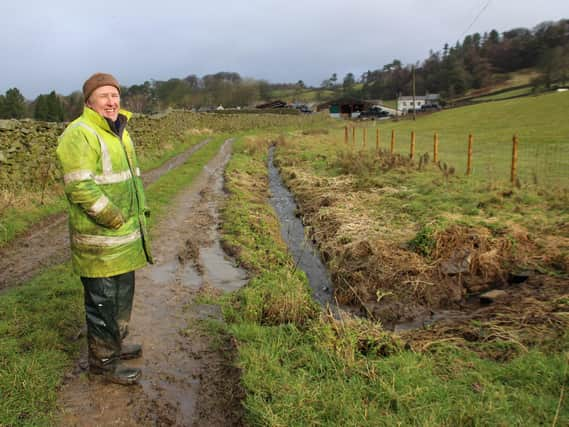Upland farmers in the Yorkshire Dales National Park help create new virtual map to reconnect nature


The new mapping tool, named Re:Cover, is designed to help people looking to protect, expand and connect habitats such as flower-rich hay meadows, wildlife-rich wetlands and ancient woodlands.
Craven farmer Anthony Bradley, part of the Yorkshire Dales Farming and Land Management Forum, which helped plot the map, tested it as it was being developed. He described it as a “really good starting point” for farmers thinking of conservation work.
Advertisement
Hide AdAdvertisement
Hide Ad“The great thing about the map is that it shows you what you’ve got and the possibilities that can come from that.
“It’s a really good starting point if you’re thinking of doing some stewardship scheme or other work like that, giving a factual basis for informed discussion.”
Developed by the Yorkshire Dales National Park Authority in partnership with the Forum, Re:Cover uses information gathered from surveys carried out by the Authority every year since 2010, as well as information collected by Natural England and the Forestry Commission.
Chair of both the National Park Authority and Yorkshire Dales Farming and Land Management Forum, Neil Heseltine said Re:Cover would be a useful tool as we move towards the new ‘public money for public goods’ agricultural payment scheme, ELMS (Environment Land Management Scheme).
Advertisement
Hide AdAdvertisement
Hide Ad“There are going to be many new opportunities in future to get paid for managing land to benefit nature and people, and we want Dales landowners to be in a better position to take those opportunities,” he said.
“Farmers will know their own land better than anyone, but what some might need help with is seeing the bigger, landscape-scale picture.
“At a time of uncertainty in agriculture, we want to help farmers to identify options now that will allow them to survive and thrive into the future.”
Mr Bradley, who runs 150 ewes and around the same number of rearing cattle on 90 acres at Mearbeck between Settle and Long Preston, has been planting hedges as part of a Countryside Stewardship agreement.
Advertisement
Hide AdAdvertisement
Hide Ad“We had these little bits of beckside woods and some old ancient hedges that were all fragmented,” he said.
“Even on our modest-sized place we’ve managed to put in 1,300 metres (1,421 yards) of hedge to try to connect it all and we’ll go for another 500 or 600 metres if we can get the funding.”
Mr Bradley said he was seeing the effects of reconnecting the land. “I saw a dragonfly here by Mearbeck last summer,” he said.
“I haven’t seen a dragonfly on this beck since I don’t know when. There’s also an old hedge that we’ve connected too and there was an enormous flock of long tailed tits in there.”
Advertisement
Hide AdAdvertisement
Hide AdHe said the new map would help farmers see the where they could help reconnect habitats.
“Farmers want to farm, but we get that we need to do the other stuff too. If people know where there are hedges and woods and all the rest of it, you can start to see where you can make links.
“There are many win-wins to be had and this map is good at giving you little pointers and clues.”
Mr Heseltine said he hoped the map would be valued.
Comment Guidelines
National World encourages reader discussion on our stories. User feedback, insights and back-and-forth exchanges add a rich layer of context to reporting. Please review our Community Guidelines before commenting.